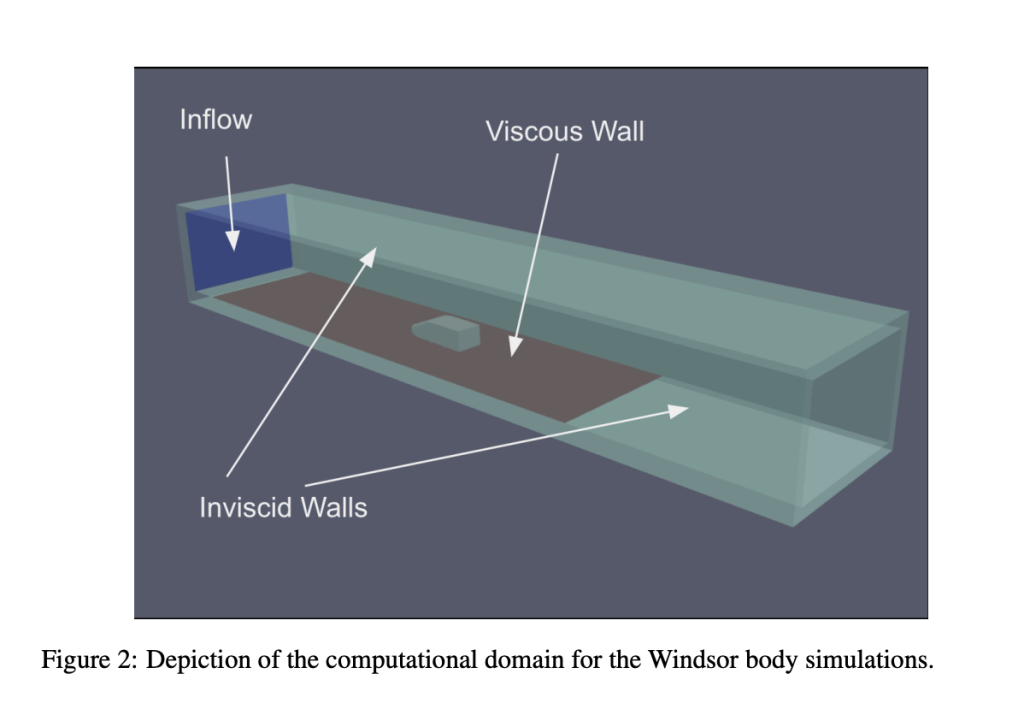

One of the most critical challenges in computational fluid dynamics (CFD) and machine learning (ML) is that high-resolution, 3D datasets specifically designed for automotive aerodynamics are very hard to find in the public domain. Resources used often are of low fidelity, not to mention the conditions, making it impossible to create scalable and accurate ML models. Furthermore, the available datasets for geometric variation diversity are limited, severely limiting improvements in aerodynamic design optimization. Filling these gaps is critical for speeding up innovation in predictive aerodynamic tools and design processes for modern road vehicles.
The classical methods for the generation of aerodynamic data have mostly relied on low-resolution or simplified 3D geometries, which cannot support the requirements of high-performance ML models. For example, datasets like AhmedML, although novel, use grid dimensions of about 20 million cells, which is much less than the industry benchmark of over 100 million cells. This limits scalability and makes the relevance of machine learning models to practical applications less meaningful. Additionally, existing datasets often suffer from poor geometric diversity and rely on less accurate computational fluid dynamics techniques, which means that there is a very limited scope for addressing the complex aerodynamic phenomena found in actual designs.
Researchers from Amazon Web Services, Volcano Platforms Inc., Siemens Energy, and Loughborough University introduced WindsorML to address these limitations. This high-fidelity, open-source CFD dataset contains 355 geometric variations of the Windsor body configuration, typical for modern vehicles. With the use of WMLES containing more than 280 million cells, WindsorML brings outstanding detail and resolution. The dataset is comprised of diverse geometry configurations generated with deterministic Halton sampling for comprehensive coverage of aerodynamic scenarios. Advanced CFD methods and GPU-accelerated solvers enable accurate simulation of flow fields, surface pressures, and aerodynamic forces, thus setting a new benchmark for high-resolution aerodynamic datasets.
The Volcano ScaLES solver generated the dataset by employing a Cartesian grid with focused refinement in areas of interest, such as boundary layers and wakes. Every simulation captures time-averaged information related to surface and volumetric flow fields, aerodynamic force coefficients, and geometric parameters, all of which are provided in widely accepted open-source formats like `.vtu` and `.stl`. The systematic variation of seven geometric parameters, including clearance and taper angles, produces a wide range of aerodynamic behaviors within a comprehensive dataset. The accuracy of this dataset is further validated through a grid refinement analysis, which ensures strong and reliable results that agree with experimental benchmarks.
WindsorML demonstrates outstanding performance and versatility, which is validated through its consistency with experimental aerodynamic data. The dataset offers deep insights into flow behaviors and force coefficients, including both drag and lift, with a wide range of configurations, thus underlining its value for practical applications. Preliminary assessments based on machine learning models, such as Graph Neural Networks, show good promise for predictive aerodynamic modeling. These models also exhibit good accuracy in predictions of aerodynamic coefficients to illustrate the effectiveness of this dataset in efficiently training systems of machine learning. WindsorML’s comprehensive outputs and high resolution make it an invaluable resource for advancing both CFD and ML methodologies in automotive aerodynamics.
By overcoming the limitations of existing datasets, WindsorML offers a transformative resource for the CFD and ML communities. It helps in developing scalable, yet accurate predictive models, for aerodynamic evaluations. With high-fidelity simulations and diverse geometric configurations, it is well poised to help accelerate innovation in vehicle design and provide a robust basis for integrating AI into workflows for aerodynamic analysis.
Check out the Paper. All credit for this research goes to the researchers of this project. Also, don’t forget to follow us on Twitter and join our Telegram Channel and LinkedIn Group. Don’t Forget to join our 60k+ ML SubReddit.
The post This Machine Learning Research from Amazon Introduces a New Open-Source High-Fidelity Dataset for Automotive Aerodynamics appeared first on MarkTechPost.
Source: Read MoreÂ

 Trending: LG AI Research Releases EXAONE 3.5: Three Open-Source Bilingual Frontier AI-level Models Delivering Unmatched Instruction Following and Long Context Understanding for Global Leadership in Generative AI Excellence….
Trending: LG AI Research Releases EXAONE 3.5: Three Open-Source Bilingual Frontier AI-level Models Delivering Unmatched Instruction Following and Long Context Understanding for Global Leadership in Generative AI Excellence….